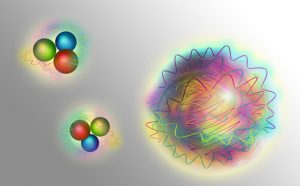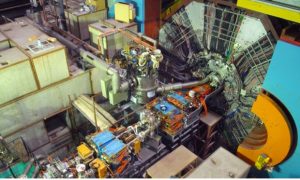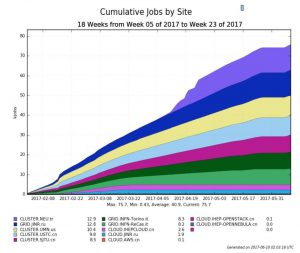
Prof. Dr. İsmail Ruhi Uman is a particle physicist who had previously worked in leading international high energy physics laboratories. He was born in Istanbul in 1963 and is both a Turkish and an Italian citizen. In 1993, he has graduated from the Department of Physics of the University of Perugia, in Italy.
He has gained his first experience in the field of particle physics in the LVD experiment at the Italian Gran Sasso Laboratories (LNGS), which are the world’s largest underground laboratories. He has conducted his studies on various physical phenomena, including stellar collapses, cosmic ray physics, neutrino oscillations, and proton decay. In 1995 has been taking part in the Crystal Barrel experiment at CERN, where he succeeded to observe for the first time the decay of f0(1710) meson to two kaons in proton-antiproton annihilations. The aim of his research is to observe and determine the properties of scalar mesons like f0(1500) and f0(1710). The standard model of physics predicts the existence of bound states not only of quarks (meson and baryons) but also of two or three-gluons called glueballs, or their admixtures like exotic hadrons or tetra-quarks.
So far f0(1500) and f0(1710) are considered the best candidates of the lightest glueball states. He completed his doctorate study in particle physics at Ludwig Maximilian University in Munich, Germany, in 2001.

Nucleons consist (left) of quarks (matter particles) and gluons (force particles). A glueball (right) is made up purely of gluons.
In 2000 he moved to Chicago where he worked as a research associate at Northwestern University in Evanston, Chicago, and joined the E835 Fermilab experiment. He moved back to CERN in 2004 where he took part in the COMPASS experiment. In this experiment, he investigated the production of exotic states and glueballs in different physics processes, like diffractive scattering and central production. Then he moved back to Turkey to become Assistant Professor at Doğuş University in 2011 where he became Associate Professor in 2015. In Turkey, he joined the international BESIII experiment which is located in the Institute of High Energy Physics (IHEP), in China. The Turkish collaboration to the experiment has been supported by the Turkish Accelerator Centre for Particle Factory via the State Planning Organization. He finally moved to Near East University in 2016 where he became a Professor in physics in 2018. He is continuing his research in high energy physics and hadron spectroscopy at the BESIII experiment, which is one of the most successful world experiments in this field with an average of 50 publications per year in high impact factor physics journals. With the help of the IT division at NEU, he achieved to deploy the IBM teraflop High-Performance Computer from Near East University within the international distributed computing system to perform physics analyses for the BESIII experiment.

A view of the BESIII detector operating in the BEPCII electron-positron collider at IHEP, Beijing, China.

A stack histogram of the executed jobs in the international GRID system for physics analysis of the BESIII experiment. Those performed by the computer cluster of the High-Performance IBM Computer at NEU are shown on top.